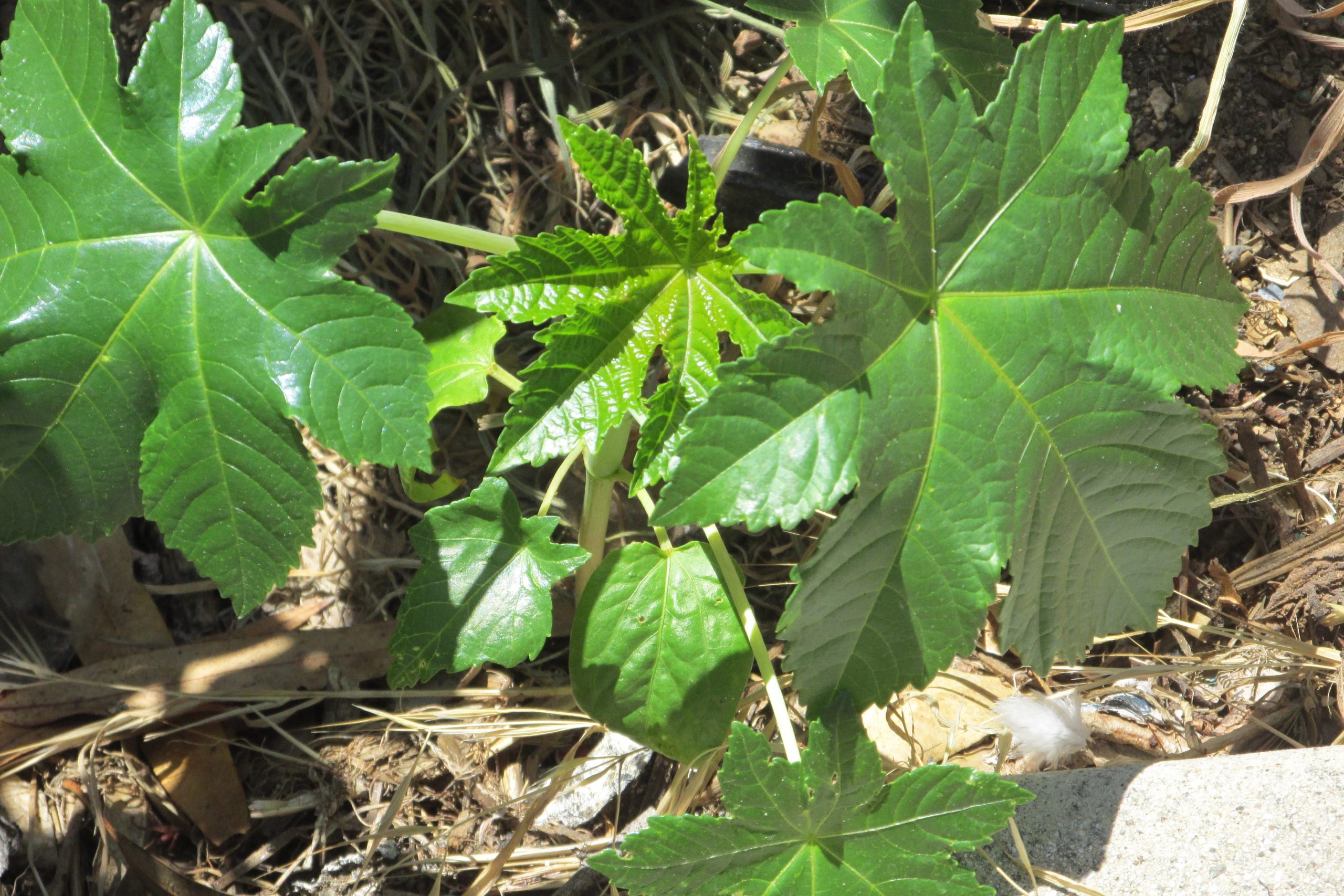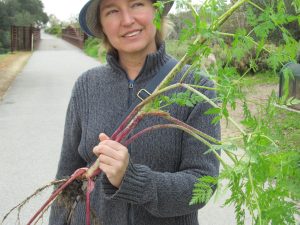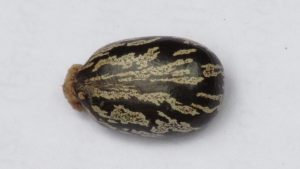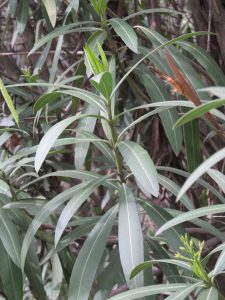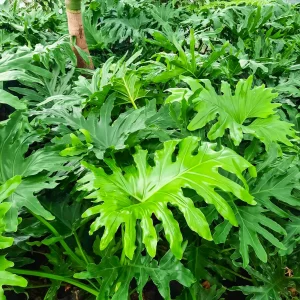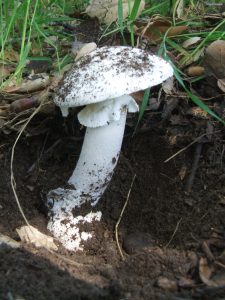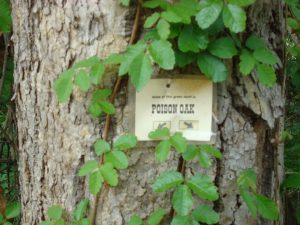SOME POISONOUS PLANTS OF THE U.S.
By Christopher Nyerges
[Nyerges is an ethnobotanist who has taught field trips since 1974. He has written several foraging books, including “Guide to Wild Foods.” He can be reached at www.SchoolofSelf-Reliance.com.]The diverse chemistry of the natural world makes many plants good to eat, but others not so good to eat. Some can get you very sick and kill you if you eat them. This is why you should never eat any wild plant until you have positively identified it as an edible species. Here is a selection of some of the common poisonous plants that may grow near you. Most are found in the wild, and some are found in your backyard. And there are many, many others besides these listed here.
POISON HEMLOCK (Conium maculatum)
This European native is now pretty common in North America, and just a little bit can kill you! This is the plant that Socrates-fame. This plant is in the parsley/carrot family, and so it has an appearance of an edible plant. Whether cooked in soup, or added to salad, the result is vomiting, diarrhea, paralysis, weak pulse, and convulsions. Death can occur as quickly as an hour after eating this ferny-looking plant.
WATER HEMLOCK (Cicuta maculata)
Water hemlock prefers meadows, streams, marshes, and ditches, and its leaves are pinnately-divided, and broader than its relative, poison hemlock. The root is the most toxic, and campers sometimes think the tubererous roots are parsnips. The effects are nearly the same as poison hemlock, and about a mouthful of the roots will kill an adult.
CASTOR BEAN (Ricinus communis)
This is a tropical plant that is found all over the South and western states. It used to be planted for its oil for both commercial and industrial uses, and now is very common in the wild. The seeds are attractive and sometimes used in jewelry, and when someone chews on the seed, it only takes a dozen or less to cause death. This is the source of the poison ricin, which is most concentrated in the seed. Ingestion of the seed causes cramps, diarrhea, vomiting, and convulsions. Death can result in 24 to 48 hours if enough seeds were consumed.
TREE TOBACCO (Nicotiana glauca)
This plant is a native to South America, and can now be found in the southern, southwestern, and western states. In the young stages, it has been confused for either collard greens or pokeweed, cooked and eaten. The result is vomiting, diarrhea, irregular pulse, shaking, muscle convulsions, and general weakness – nothing pleasant. Death can occur though death appears to be rare.
JIMSONWEED (Datura wrightii and D. stramonium)
Jimsonweed is regarded as sacred herb among native peoples of the west, having been used for centuries in ceremonies.
Jimsonweed makes the news all too frequently because some high school boys wanted a cheap way to get high. They either smoke it, or drink it, or eat it, either the leaves or the flowers, but the result is always the same. It results in incoherency, delirium, temporary blindness, dry mouth, vomiting, and nausea. Death is rare. Such teens who are foolish enough to do this nearly all end up hospitalized for awhile. One recently reported “It was the worst experience of my life.”
FOXGLOVE (Digitalis purpurea)
In the state of Washington, an elderly couple had been recommended “comfrey tea” for their arthritis. While out on one of their walks, they collected a wild plant which looked exactly like all the pictures they’d seen of comfrey leaves. They took the leaves home and made their tea. They became sick immediately. The woman died before the ambulance arrived, and the man died in the hospital. The plant in this case was a common wild plant in the Northwest, foxglove. Foxglove is a dangerous poison if eaten since it contains digitalis. Though it is very effective for reviving irregularly beating hearts when used under carefully controlled situations, it is lethal as an after-dinner tea.
The young leaves of foxglove actually appear very much like the young comfrey leaves. The plants are not at all similar in their flowering stages, however.
OLEANDER (Nerium oleander)
The common oleander shrub is another plant which is widespread and periodically causes death. The plant requires little maintenance and produces pretty pink and white flowers. Thus, it is commonly planted along highways, around parks, and in picnic areas. Poisonings have occurred with oleander when campers used the slender branches for roasting hot dogs or marshmallows. The oils from the oleander enter the hot dog with the possible result being severe sickness and even death. A single leaf is said to be sufficient to kill an adult.
PHILODENDRON (Philodendron spp.)
A large and showy yard plant, this is not for food. It superficially resembles the taro and tannia plants used to make poi in Hawaii, and so people have occasionally tried to eat the roots. Eating any part of the philodendron (and related plants) can be dangerous, as it contains calcium oxalate crystals, which causes severe burning and swelling of the throat if eaten. Symptoms can include vomiting, nausea, diarrhea, and choking. Death can be from suffocation. (Why grow such a plant in your yard in the first place?)
ANGEL OF DEATH MUSHROOM (Amanita ocreata)
Ah, mushrooms! First, don’t eat any wild mushrooms until you have studied mycology actively for at least two years. Yes, there are many good edible wild mushrooms, and you want to be able to positively recognize them, and don’t eat a poisonous one by mistake. This mushroom, Angel of Death, is one of the deadly Amanitas. It is distinguished by having white gills (and white spores), a stout white stem, a ring on the stem, and a membranous cup around the base of the stem. If you consume this, death is slow, painful, and sure, even if you get medical attention. Death can take about a week after ingestion.
POISON OAK/IVY (Toxicodendron spp.)
Poison oak is mostly western U.S., and poison ivy is found mostly in the eastern areas. The plant is a sprawling vine, covering trees and other vegetation. It contains an oil called urushiol, which causes severe rash on the skin if you contact the plant. Contact can be made with the leafed-out plant, or even in winter when the stalks are bare of leaves. One can also get the rash during fires when the oils are in the smoke. Someone highly allergic should get to know this plant and avoid contact. There are numerous commercial remedies for the rash, as well as several old-timey folk remedies, such as the application of the fresh juice of Aloe vera.
Not, this is NOT a complete list of all the poisonous plants of North America. Don’t eat any wild plant for food unless you’ve positively identified it!
PHOTO CAPTIONS – all photos by Christopher Nyerges, unless otherwise notes.

